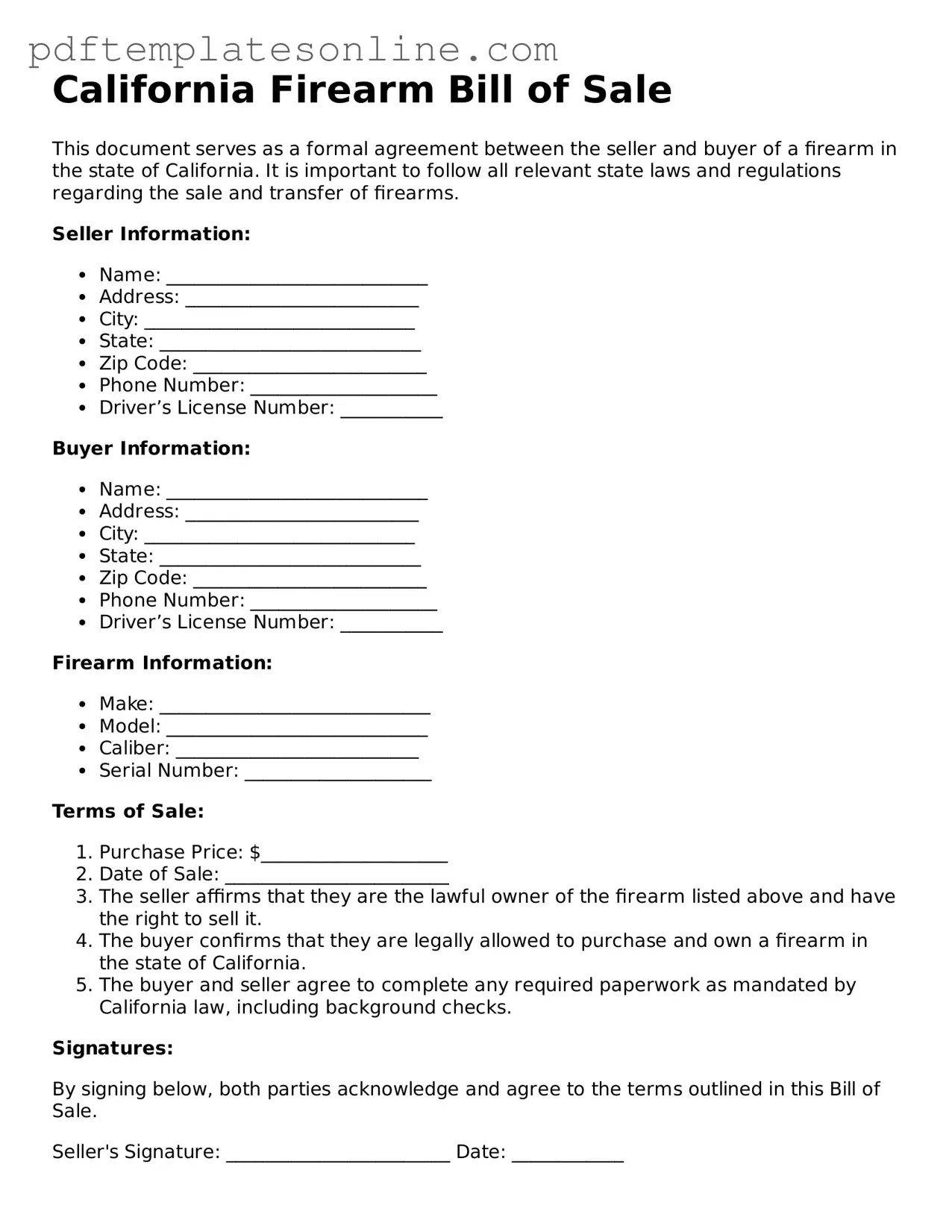Filling out the California Firearm Bill of Sale form can be straightforward, but many people make common mistakes that can lead to complications. One frequent error is not providing complete information. Every section of the form must be filled out accurately. Missing details can delay the transaction or even invalidate it.
Another mistake is not using the correct date. The date of the transaction must reflect when the sale actually occurs. Inaccuracies in dating can raise questions about the legitimacy of the sale and may lead to legal issues down the line.
People often overlook the importance of signatures. Both the buyer and the seller must sign the form. Failing to obtain both signatures means the document may not hold up in legal situations. It's essential to double-check that all required parties have signed.
Some individuals forget to include the firearm's serial number. This number is crucial for identification purposes. Without it, tracking the firearm in the future could become problematic, especially if there are any disputes regarding ownership.
Another common error involves the buyer's and seller's personal information. Providing incorrect names or addresses can cause confusion. Always ensure that names are spelled correctly and that all addresses are current and accurate.
People sometimes misinterpret the purpose of the Bill of Sale. It serves as a legal record of the transaction, not just a receipt. This document can be vital in proving ownership, so it’s important to treat it with the seriousness it deserves.
Lastly, many forget to keep a copy of the completed form. After filling it out, both parties should retain a copy for their records. This step is often neglected but is essential for future reference and to protect against any potential disputes.
